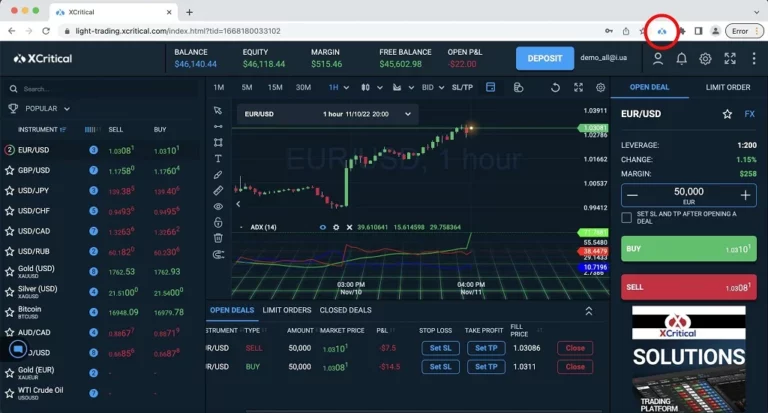Content
Instead, MiCA introduces one authorization system that will be used by all 27 EU countries. Once authorized in their country of registration, CASPs will be able to provide their services across all EU member states. MiCA regulation will allow regional Web3 businesses to operate in the EU market without needing to mica regulation attain a license from each EU country.
What Is Markets in Crypto-Assets (MiCA)?
One of the conceits of cryptocurrencies is that anyone can mine them using a computer with an Internet connection. However, mining popular cryptocurrencies requires considerable energy, sometimes as much energy as entire countries consume. The expensive energy costs and the unpredictability of mining have concentrated mining among large firms whose revenues run into billions of dollars. Cryptocurrencies are digital or virtual currencies underpinned by cryptographic systems. “Crypto” refers to the various encryption algorithms and cryptographic techniques that safeguard these entries, such as elliptical curve encryption, public-private key pairs, Cryptocurrency and hashing functions. A defining feature of cryptocurrencies is that they are generally not issued by any central authority, rendering them theoretically immune to government interference or manipulation.
What Is MiCA (Markets in Crypto Assets Regulation) ?
- Under MiCA, crypto issuers and service providers are held accountable for complying with regulatory standards, which include proper disclosure, reporting obligations, and ensuring the security of user funds.
- Many have implemented some protection by regulating exchanges that operate in their jurisdictions.
- To help issuers and exchanges, MiCA outlines what the whitepapers should look like (find the full guidance in Title II, Article 6 of MiCA).
- The purpose of this website is solely to display information regarding the products and services available on the Crypto.com App.
- However, the lack of a consistent and comprehensive regulatory framework has made it difficult for businesses and investors to navigate the crypto landscape.
- While MiCA aims to create a comprehensive regulatory environment for the crypto market to thrive in the European Union, its implementation presents several challenges.
- The volume of all stable coins is now $353.55B, which is 92.97% of the total crypto market 24-hour volume.
Under MiCA, crypto-asset service providers—legal persons or organizations whose primary business is providing professional crypto asset services—must obtain authorization to operate in the EU. These services include custody and administration of crypto assets on behalf of third parties, operating trading platforms, executing orders, and providing exchange services between crypto assets and fiat currencies. MiCA includes specific requirements for asset-referenced tokens (ART) and electronic money tokens (EMT), which could potentially pose risks to financial stability. https://www.xcritical.com/ ART denotes crypto tokens exchangeable with multiple fiat, physical assets, or cryptocurrencies, while EMTs refer to tokens pegged to one fiat currency.
Markets in Crypto-Assets Regulation (MiCA) — A Guide
The Markets in Crypto-Assets (MiCA) regulation is a landmark framework created by the European Commission (EC) that focuses on maintaining financial stability. It also is designed to protect investors and promote widespread transformation in the crypto asset sector in European Union (EU) countries. The disclaimer’s attempt to characterize the token as “not intended to be… an investment opportunity” appears insufficient given the substance-over-form approach consistently applied by courts and regulators to crypto assets. This has led to concern for advocates within the industry that the volatile meme coins may hurt the public perception of legitimate digital assets and push regulators to act aggressively against digital assets.

Market Integrity and Consumer Protection
To obtain authorization, CASPs must have at least one EU-based director and maintain a registered office within the EU. Once authorized, CASPs can passport their services across all EU member states, though non-EU providers are limited to reverse solicitation to offer their crypto services to EU residents. MiCA provides a framework for supervision and enforcement through the establishment of supervisory authorities at national and supranational levels. National authorities will oversee service providers, while the European Securities and Markets Authority (ESMA) will supervise specific aspects, such as stablecoins and cross-border services.
This is designed to build trust in the market by ensuring that companies operate with integrity and transparency. However, some have raised concerns that MiCA could stifle innovation and growth in the industry. The requirements for whitepapers and prospectuses, for example, could create a significant burden for issuers, particularly for smaller businesses. Additionally, the conditions for authorization and registration could make it more difficult for businesses to enter the industry.
Greater participation from institutional investors can inject more capital into the market, further facilitating the growth and maturity of the crypto market. Title I, Article 1 defines offering and trading platform requirements for publicly offered crypto-assets and entities involved in them. Each of our coin data pages has a graph that shows both the current and historic price information for the coin or token. Normally, the graph starts at the launch of the asset, but it is possible to select specific to and from dates to customize the chart to your own needs. The most experienced and professional traders often choose to use the best crypto API on the market.

It doesn’t help matters that cryptocurrencies have primarily functioned outside most existing financial infrastructure. Because there are so many cryptocurrencies on the market, it’s important to understand the types. Knowing whether the coin you’re looking at has a purpose can help you decide whether it is worth investing in—a cryptocurrency with a purpose is likely to be less risky than one that doesn’t have a use. This ensures that stablecoin issuers hold sufficient reserves, protecting users from sudden collapses. While this boosts confidence, smaller issuers may struggle to comply, potentially limiting options for users.
This regulatory framework also presents an opportunity for the industry to move towards greater standardization and harmonization. By establishing a single regulatory framework for the entire EU, MiCA could help to create a level playing field for businesses operating in the industry. This could also make it easier for businesses to expand across borders and access new markets. The project won’t need authorization to issue their assets, as their published whitepaper will serve as prospectuses that offer prospective buyers more details on the asset’s characteristics. MiCA aims to create an all-encompassing legal framework that gives consistency in regulatory approach for all 27 countries affected. Prior to MiCA, crypto firms operating in the EU would have to comply with various different regulations, and apply for multiple licenses.
If you only want to buy cryptocurrency as an investment, you may be able to do so through your brokerage. For example, Robinhood allows users to invest in bitcoin and other cryptocurrencies, although you cannot withdraw them from the platform for purchases. In addition, there are several crypto ETFs that provide exposure to the crypto asset class without requiring the investors to maintain their own wallets.
While Switzerland does not have a comprehensive regulatory framework for crypto assets, it has established a clear legal framework that provides certainty to businesses operating in the industry. It also applies to firms offering crypto investment advice and portfolio management services. MiCA is designed to regulate a wide range of crypto-assets that are not covered by existing financial regulations. Establishing clear definitions and categories for these assets, MiCA seeks to streamline the regulatory process and reduce confusion among users and service providers. One of MiCA’s primary components is the licensing requirements for issuers of crypto assets (with some exceptions) and providers of crypto-related services such as exchanges and wallet providers.
It’s important to note that MiCA doesn’t only apply to CASPS within the EU, and also to actors from outside the EU who are looking to operate within the European market. But regardless of where they are from or outside Europe, CASPs that are non-compliant will be listed in a public register, and this is to provide clarity for consumers and market participants. But for most European crypto stakeholders, the regulatory demands and impact of MiCA will fully kick in at the end of this year. So in order to ensure that there is minimal impact on your crypto investing or business activities, it is imperative to know the ins and outs of MiCA. One definition of money is something that is generally accepted as a medium of exchange, a measure or store of value, and a unit of account. In theory, cryptocurrencies are meant to be decentralized, their wealth distributed between many parties on a blockchain.
MiCA’s consumer protection measures are designed to safeguard investors and traders by imposing several obligations on market participants. This includes pre-contractual disclosures, rules regarding targeted advertising, and mandatory transparency in service offerings. Enforcing strict transparency and disclosure requirements allows MiCA to hold market participants accountable, which helps reduce the likelihood of fraud and other unsanctioned activities.
This page will explore what MiCA is, its key features, its impact on crypto businesses, and the benefits it brings to the industry as a whole. Additionally, we will discuss how businesses can prepare for compliance with MiCA and the broader future of crypto regulation. A crypto-asset is a digital representation of value or a right that can be transferred or stored electronically using distributed ledger technology or similar technology. Crypto assets are a digital innovation that can streamline capital-raising processes, enhance competition and create an innovative and inclusive way of financing for consumers and SMEs.
None of these methods are guaranteed to make money, but many people have benefitted from them. Despite these risks, cryptocurrencies have seen a significant price leap, with the total market capitalization rising to about $2.4 trillion. Despite the asset’s speculative nature, some have created substantial fortunes by taking on the risk of investing in early-stage cryptocurrencies. Central to the appeal and functionality of Bitcoin and other cryptocurrencies is blockchain technology.
